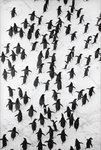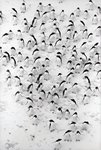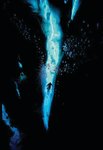Port Townsend resident Bill Curtsinger may be best known locally as the friendly owner of Sunrise Coffee Company at Boat Haven, but there’s more than meets the eye.
Before moving to Port …
This item is available in full to subscribers.
We have recently launched a new and improved website. To continue reading, you will need to either log into your subscriber account, or purchase a new subscription.
If you had an active account on our previous website, then you have an account here. Simply reset your password to regain access to your account.
If you did not have an account on our previous website, but are a current print subscriber, click here to set up your website account.
Otherwise, click here to view your options for subscribing.
* Having trouble? Call our circulation department at 360-385-2900, or email our support.
Please log in to continue |
|



Port Townsend resident Bill Curtsinger may be best known locally as the friendly owner of Sunrise Coffee Company at Boat Haven, but there’s more than meets the eye.
Before moving to Port Townsend and getting involved in the coffee business, Curtsinger was a deep-sea photographer renowned for his incredible images documenting marine wildlife around Antarctica. He worked as a photographer for National Geographic from 1970 to 2003, embarking on numerous expeditions and photographing beautiful and mysterious creatures around one of the most desolate locations on Earth.
There’s nothing easy about diving through the Antarctic Ocean in sub-zero temperatures with only a 1/4-inch-thick wetsuit protecting you from the great unknown, but somehow Curtsinger thrived in the situation, bringing back magnificent photos from the chilling depths.
With a 36-shot film camera rig, scuba gear, and a small crew, Curtsinger was able to show the profound beauty and eeriness of marine wildlife hiding beneath waters where very few have ever explored.
Now, local residents have the opportunity to observe his images up close at the Curtsinger exhibit, hosted by Northwind Art. Featuring photos from sea turtles to humpback whales, the exhibit displays 16 remarkable images from Curtsinger’s illustrious career.
Printed by local artist Brian Goodman, with Kerry Termain helping with the layout and editing, the exhibit has breathed new life into Curtsinger’s truly breathtaking photos. The exhibit is open from noon to 5 p.m. daily at the Grover Gallery at 236 Taylor St.
“He’s a pioneer of underwater photography. Bill’s work gives us an opportunity to have gratitude for what was, what is, and question what we are leaving,” said Teresa Verraes, executive director of Northwind Art.
“He’s one of the most generous people; these photographs are his gift to the world.”
SHOOTER’S STORY
Before trekking across the globe for National Geographic, Curtsinger first connected to nature growing up in Southern New Jersey.
“I was immersed in the wild places around me,” Curtsinger said.
After being drafted into the military, Curtsinger utilized his skills as a self-taught photographer as a member of the Navy Photo Unit along with the Atlantic Fleet Combat Camera Group during the Vietnam War.
During his time in the Navy, Curtsinger developed his skills as a scuba diver and broadened his expertise in the water.
Later on, he was hired by National Geographic, where he embarked on a career as an underwater photographer, gracing the front cover of the magazine six times, and producing 33 stories for the publication.
Deep-sea photography was in its infancy in the 60’s and 70’s, and many explorers and photographers were documenting the creatures around tropical reefs near the equator, but not the less explored oceans in the Arctic or Antarctic regions.
When Curtsinger volunteered to venture out to Antarctica for National Geographic, he decided to try a new approach to documenting deep-sea creatures.
CLOSE ENCOUNTERS
While his contemporaries like Jacques Cousteau utilized large crews and an abundance of equipment on their expeditions, Curtsinger chose a minimal approach with a small crew and limited equipment, which helped him photograph wildlife in a more intimate manner.
During one expedition, Curtsinger was deep into the Antarctic depths when suddenly his camera strobe malfunctioned, bleeding bright light through the dark water. While fidgeting with the device, Curtsinger felt a sudden nudge behind him.
“I felt this clunk and looked up and found this leopard seal,” Curtsinger said.
With his trademark cool temperament, he quickly snapped a picture of the leopard seal as it was biting at the strobe light, which led to one of the most prominent pictures in Curtsinger’s catalogue. A somewhat obscure image with two green eyes boldly staring into the lens, the mystical appearance of potentially lethal curiosity.
Many of Curtsinger’s photos come with origin stories. Whether from a perilous situation or a spur-of-the-moment decision, each photograph has a fascinating tale of the trajectory from idea to a masterpiece.
AN ARTIST’S APPROACH
When asked about his approach to photography, Curtsinger responded, “I always have a fantasy of the photo I can make before I go out on the field.”
An additional challenge to deep-sea photography is not only to predict when and where the creatures will move, but to capture an image without disturbing them or scaring them away.
“You can’t tell animals what to do,” he said.
The goal, he added, is to “place yourself in their environment without disturbing them.”
Equipped with just his wetsuit, scuba gear, and a camera rig in the depths of the Antarctic Ocean, along with numerous variables and challenges makes it incredibly difficult to not only capture an image, but to do it amidst certain dangers.
“The hours it takes to get these images, it’s hard work,” Kenneth Brower said.
Brower is the author of “Curtsinger: Reflections on the Life and Adventures of Photographer Bill Curtsinger” a
$20 portfolio booklet that accompanies the exhibition.
“It’s hard, back-breaking work,” Brower added.
“These animals don’t stop and they’re not turning around.”
Although Curtsinger has traded cameras for coffee nowadays, his life work has given him incredible adventures, stories, gratitude, and phenomenal photographs.
“I’ve been so lucky in my career to travel to these places,” Curtsinger said. “I had the most amazing trips.”
The Curtsinger exhibit runs until Oct. 31.
For more information about the show or Northwind Art, visit northwindart.org/curtsinger-exhibit.